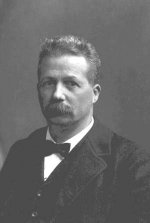Loo-poo-oi'-yes the Rock Giant of Tamalpais
The Hookooeko of Nicasio and San Rafael say:
A woman had a husband and two boy babies— twins. The woman’s brother killed her husband and the little boys did not know that they ever had a father. When they were big enough they went off every day to play by a big rock in the woods. They went always to the same place; they liked this place and always went there. This was the very place where their father, when he was alive, used to go every day to sing, but the little boys did not know this—for they did not even know that they had ever had a father.
One day the boys heard somebody say: “You come here every day just as your father used to.” The voice came from the rock; it was the voice of Loo'-poo-oi'-yes 31 the Rock Giant. Then the boys knew they had had a father. They went to the rock and saw long hairs sticking up. These hairs grew out of the nostrils of Loo'-poo-oi'-yes; the boys took hold of them and pulled them out.
This made Loo'-poo-oi'-yes angry and he took a long hooked stick and tried to catch the boys to kill them. He was all rock except a place on his throat where he wore an abalone shell. The boys, saw this and shot their arrows through it and killed him. When he died he fell to pieces; the pieces were rocks and scattered over the ground. Inside he was flesh like other people, but outside he was rock, except the place on his throat where the abalone shell was.
Footnotes
235:31 The name Loo'-poo-oi'-yes means literally the old man of rock, from loo'poo rock, and oi'yes old man.
Bibliographical Information

C. Hart Merriam |
Scanned by J. B. Hare, redactor, at sacred-texts.com, August 2003. These files may be used for any non-commercial purpose, provided this notice of attribution is left intact.
- According to Frank Latta, in Handbook of the Yokuts Indians (1949), pp. 89-90, some of these stories are actually Yokuts myths, with Mewuk names substituted for Yokuts names. Chowchilla Mewuk informants should have been identified as Chowchilla Yokuts and Hool-poom-ne Mewuk should have been identified as Hulpumne Yokuts.


